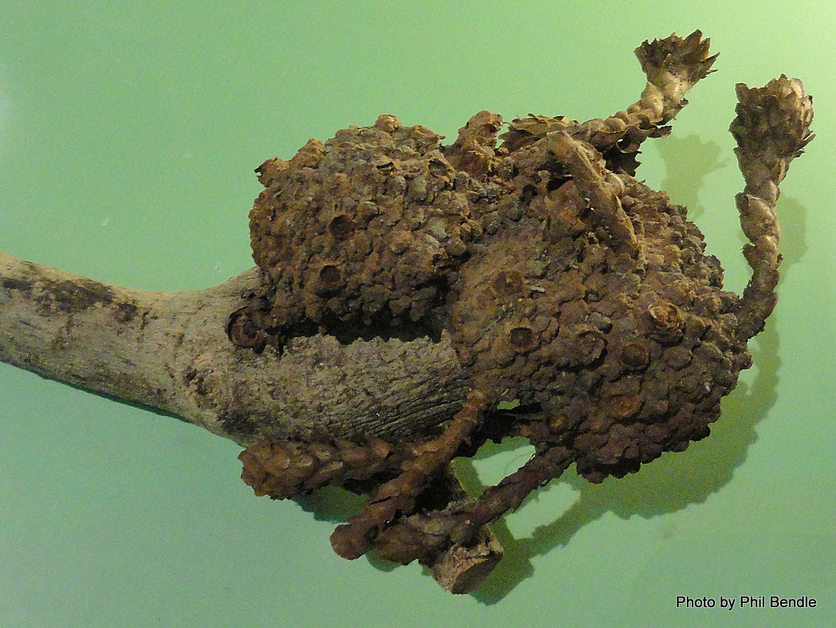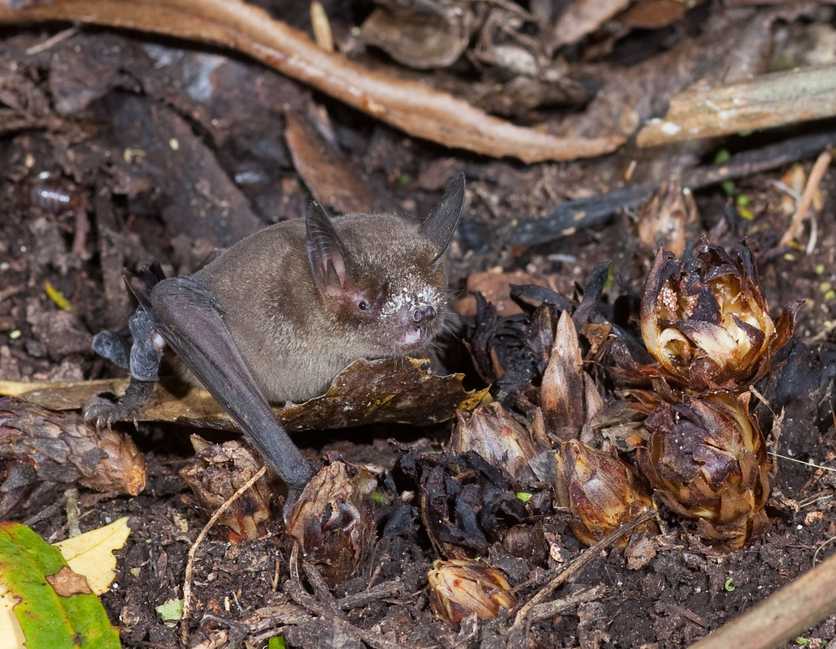Fossilised dung (coprolites) from kākāpō in a cave in the South Island has revealed an unexpected and hitherto unknown relationship between three of the country’s most unusual threatened species
- The nocturnal flightless kākāpō (Strigops habroptilus)
- A burrowing bat called the New Zealand lesser short-tailed bat (Mystacina tuberculata)
- A rare underground, parasitic plant – the Hades flower (Dactylanthus taylorii)
Researchers from Landcare Research, the Department of Conservation, the University of New South Wales and the Australian Centre for Ancient DNA (University of Adelaide) found that the ancient kākāpō coprolites, identified by DNA analysis, contained large amounts of pollen of the rare Hades flower, which lives underground and has no roots or leaves itself.
Birds could once have pollinated the Hades flower
In their research paper, the scientists explain that the range of all three species has shrunk considerably since human settlement, and the present distributions of the Hades flower and the kākāpō no longer overlap (until a recent reunion on Little Barrier). Currently, the forest-floor-foraging lesser short-tailed bat is the only known native pollinator of the Hades flower, which gives off a musky sweet smell to attract the bat.
However, the findings raise the possibility that birds and other small fauna could have once fed on and pollinated the plant. “If confirmed, through experimental work and observations, this finding may inform conservation of the plant. For example, it may be possible to translocate D. taylorii (Hades flower) to predator-free offshore islands that lack bats but have thriving populations of endemic nectar-feeding birds.”
Dr Janet Wilmhurst from Landcare Research says the Hades flower is now restricted to around 4% of its pre-human range, due to forest clearance, predation by introduced mammals and a lack of pollinators and seed dispersers. Scattered populations only survive in the central North Island and a few offshore islands.
Reunion of kākāpō and Hades flower on Little Barrier
Kākāpō are extinct from mainland New Zealand but have recently been introduced to Little Barrier Island, where the Hades flower still survives. The researchers believe that this reunion of the two species is the first time they have overlapped in a century.
Dr Jamie Wood, lead researcher and also from Landcare Research, says the examination of coprolites can be one of the only ways to reconstruct important pre-human ecological relationships “such as pollination and seed dispersal, which must be restored to conserve these species over the long term”.
Australian Centre for Ancient DNA Director Professor Alan Cooper says the findings show an important example of a tight co-evolutionary relationship between threatened endemic species. The plant and burrowing bat simply represent “the last men standing”.
“The coprolites suggest that kākāpō may have served as pollinators, probably along with other species, which is critical for conservation, and reveal the extent of the ecosystem links that have been broken.”
The research was published in the December 2012 edition of Conservation Biology.
Useful link
Read more about our short tail bat's unique relationship with Dactylanthus taylorii in this 2021 article from Predator Free NZ.
Related content
Discover more about New Zealand’s native bats and the ongoing conservation efforts to ensure their ongoing survival.
Activity idea
In relation to this article, your students may like to try this Pass the pollen activity in which they act out the process of insect pollination and learn that some flowers offer their pollinators a reward.


